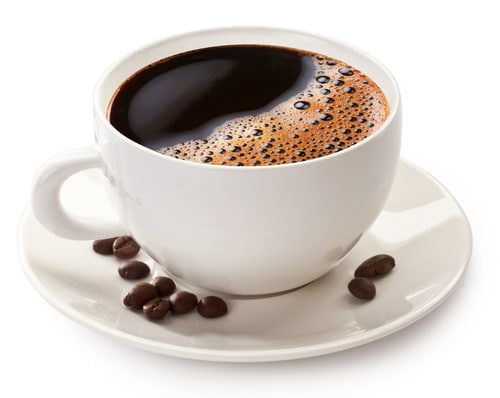
The Good Stuff:
Moderate Caffeine
If you love coffee, part of that love is probably related to a craving for caffeine. While caffeine is slightly addictive, in moderation it’s actually good for you. To start, it can help you keep a healthy weight. It boosts metabolism, which helps you process and burns calories faster. If consumed prior to a workout, caffeine can also give you an energy boost to help you work out harder. Moreover, caffeine improves your cognitive ability, focus, and alertness. A 2011 study in the Journal of Experimental Psychology found that subjects who took caffeine prior to a test were able to catch more grammatical mistakes. Finally, it can boost your mood, which is why Harvard researchers recommend that you drink coffee if you’re prone to depression.
Antioxidants
Coffee beans are loaded with antioxidants—nutrients that help your body repair itself and fight off disease. In fact, coffee is the number one source of antioxidants in many Americans’ diets. While little research has been done examining how well people absorb the antioxidants in coffee, there’s no denying that they’re there—and they may be linked to preventing debilitating diseases.
Elements that Prevent Disease
While it’s unclear exactly why regular coffee consumption has been linked to preventing several types of diseases. Research suggests that coffee reduces the risk of developing Alzheimer’s and Parkinson’s, which are degenerative brain diseases. Coffee consumption may also be tied to preventing colon cancer, breast cancer, skin cancer, and prostate cancer. Finally, research suggests coffee drinkers have a lower risk of developing type 2 diabetes and suffering from heart disease and stroke.
The Bad Stuff:
Extra Calories, Fat and Sugar
A cup of black coffee contains about two calories. Add two tablespoons of half and half or non-dairy liquid cream, and you have 42 calories. A teaspoon of sugar adds about 20 more calories. Those aren’t staggering numbers if you stick to a cup a day, but once you start indulging in multiple cups or large gourmet drinks, you can consume hundreds of empty calories. For example, a 20-ounce white chocolate mocha with whole milk and whipped cream from Starbucks contains 620 calories, 27 grams of fat and 79 grams of carbs. If you regularly drink coffee with these kinds of numbers, you’re probably offsetting whatever health benefits you might have otherwise enjoyed.
Too Much Caffeine
According to the Mayo Clinic, between 200 and 300 milligrams of caffeine, a day isn’t harmful to adults. That’s between two and four cups of brewed coffee, depending on the strength. If you consume more than four cups of coffee a day, or between 500 and 600 milligrams of caffeine, you can start to suffer from adverse effects. These include insomnia, nervousness, irritability, stomachache, racing heartbeat, and muscle tremors. Some people are more sensitive to caffeine than others, so if you have any of these symptoms, you should probably cut back.
How to Enjoy Your Java the Healthy Way
How do you extract all the health benefits of coffee without taking in too many empty calories or excessive caffeine? Here are a few tips:
1. Drink espresso. Espresso machines extract the best part of the beans—which contain the least amount of caffeine and the highest concentration of antioxidants. A double shot espresso drink contains only 50 milligrams of caffeine, while a cup of regular brewed coffee contains about 135 milligrams. If you don’t like the strong flavor of straight espresso, water it down with an Americano.
2. When not drinking espresso, extract from the best part of the beans. The more water you run through beans, the more caffeine and bitter flavor you extract—with fewer nutrients. The best way to do this is to brew your coffee with a French press. If you insist on using a drip coffee maker, try to drink the coffee that is dripped during the beginning of the brew.
3. Avoid cream, sugar, and syrup as much as you can. Try switching to fat-free milk or other low-calorie alternatives if you can’t stand the taste of black coffee.
Related Articles By Cathe:
Can Drinking Coffee Before a Workout Make Exercise More Enjoyable?

